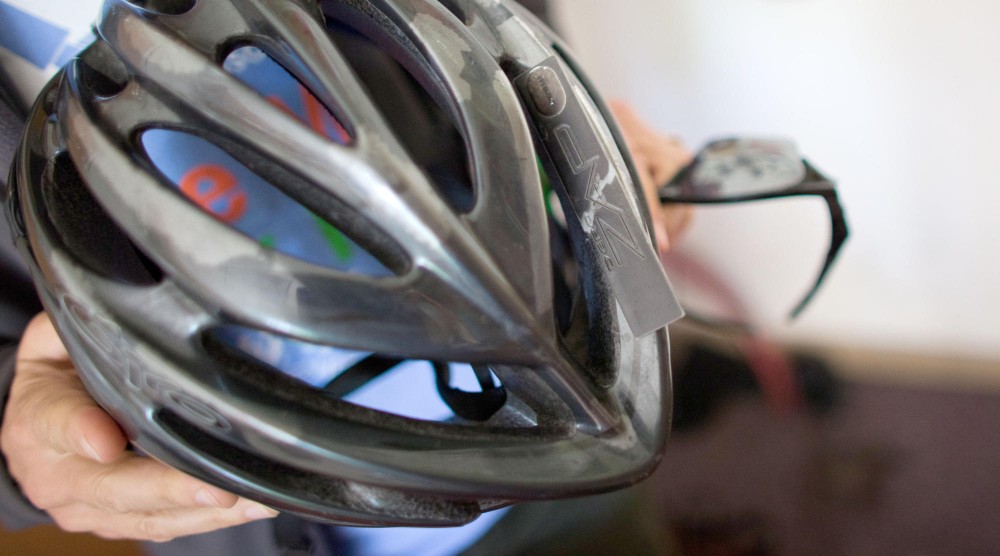With the help of a 2-inch rectangular chip, the University of Minnesota hopes to encourage more people to bike.
Using a system called Radio Frequency Identification, the chip helps ensure each rider is biking. Those who bike more will rack up more points, which they can cash in for rewards âÄî discounts on bike repairs, bike equipment and even on health insurance premiums.
The system will be based out of the UniversityâÄôs Bike Center, which will begin installing chips and registering riders for free when it opens next week.
Steve Sanders, bike coordinator for Parking and Transportation Services, said that businesses and organizations have long wanted to offer incentives to bicycle commuters, but the lack of a credible system to ensure people were biking was a problem.
âÄúUntil now, everything has been based on the honor system and people donâÄôt offer incentives for results that are based on the honor system,âÄù Sanders said. âÄúThis system is our attempt at providing confirmation that people are actually using their bikes.âÄù
In order to begin racking up points, participating bicyclists must ride by one of 20 cellular towers that the University has set up along the major bicycle corridors around campus. Each tower cost roughly $5,000 âÄî all funded using part of the bike centerâÄôs $524,000 grant from Transit for Livable Communities.
Once a tag passes within range of a tower, the bikerâÄôs ID number will be transmitted to a secure database which he or she can then access online.
While RFID technology has been around for decades âÄî commonly found in ink tags at clothing stores âÄî it has never been used as a way to reward bicycle commuters. The University will be the first place in the country to have more than one tower installed, Sanders said.
âÄúThe University is going to be the first big test of the system,âÄù said Sanders. âÄúIt will determine if this can work on a large scale.âÄù
Sanders has overseen a small pilot of the system for more than a year, in which about 100 bicyclists installed the tags on their bikes.
Among them is Lee Penn, an associate professor of chemistry, who said she has experienced very few problems with the system in the past year.
Initially, the towers around campus had trouble reading the tag on her helmet. But the sensitivity improved drastically, and she said it rarely fails now.
Penn attached the tag to her helmet because she switches between riding each of her five bikes. She said she hopes that by encouraging more people to bike, the University will be safer for everyone.
âÄúThe fewer people in cars, the better traffic is. The fewer people in cars, the fewer people die,âÄù said Penn. âÄúThatâÄôs the bottom line.âÄù
Influencing infrastructure
Greg Lindsey, professor and interim dean at the Humphrey School of Public Affairs, believes that the RFID system could eventually provide valuable information on what bike routes are used most heavily.
âÄúYou want to invest money in facilities that will be most heavily used,âÄù said Lindsey. âÄúRight now every public organization has limited money âĦ so this will allow [public officials] to more accurately document use so you can inform policy decisions about investments and infrastructure.âÄù
Lindsey added that the ability to count the number of bikers on campus further legitimizes biking.
âÄúThis would be another piece of evidence that the design of innovative biking programs can have, simultaneously, environmental, economic and health benefits, and thatâÄôs an important finding.âÄù
While the University system is the first of its kind, Sanders believes that it will have a successful future.
âÄúIt will take time to build up,âÄù said Sanders. âÄúOnce we get more and better incentives, itâÄôs not hard to see the day when this will be a city-wide thing.âÄù


